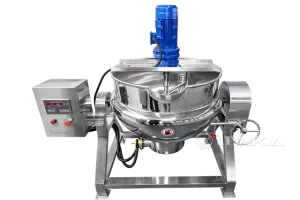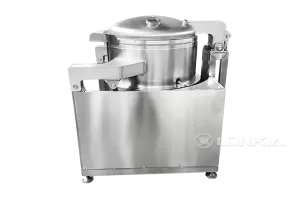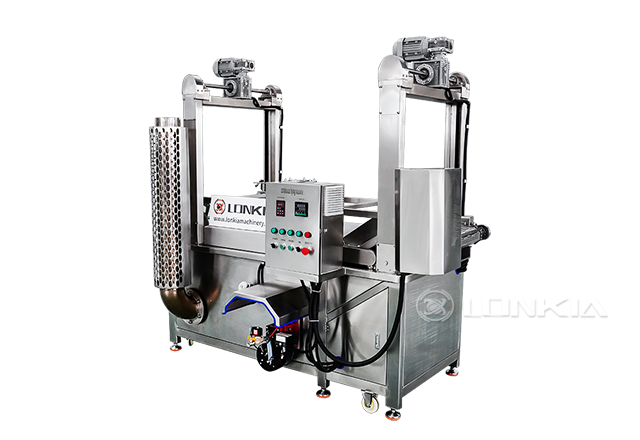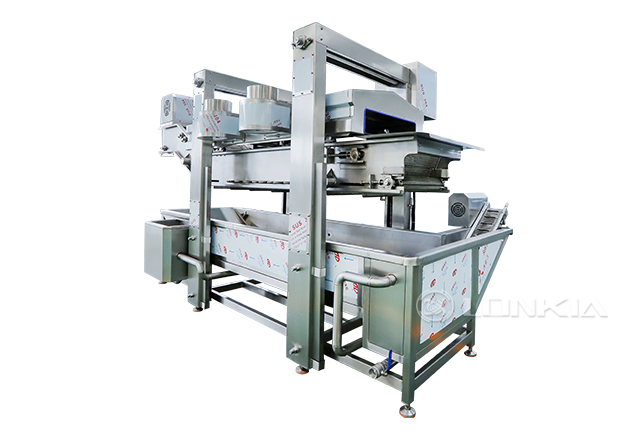When it comes to potato chips production, choosing the right processing line is a crucial decision to maximize efficiency, reduce costs, and ensure product quality. Automatic and semi-automatic production lines are two common options, but how do you decide between the two? Each system has its own advantages and limitations, and the right choice depends on factors like production scale, budget, technical requirements, and the desired level of automation. In this blog, we will compare automatic and semi-automatic potato chips processing lines to help you make an informed decision.

Level of Automation
Automatic Processing Line: As the name suggests, an automatic processing line is fully automated. From feeding raw potatoes into the system, to washing, peeling, slicing, frying, seasoning, and packaging, everything is managed by machines with minimal human intervention. Modern automatic lines come with advanced control systems that allow for real-time monitoring of the production process, ensuring consistency and quality. These lines are ideal for large-scale production as they require little to no manual involvement.
Semi-Automatic Processing Line: A semi-automatic processing line blends automation with manual labor. While key processes such as slicing, frying, and filtering are automated, certain stages like feeding raw materials, transferring products, or packaging still require human intervention. Semi-automatic lines are more suitable for medium-scale production, providing greater flexibility and versatility in operations.
Which One to Choose? If your production demands high automation and large-scale operations, an automatic line is the better choice. However, if you have a smaller budget or lower production scale, a semi-automatic line can meet your needs and offers more flexibility.
Production Speed and Efficiency
Automatic Processing Line: One of the biggest advantages of an automatic processing line is its high production capacity. Since the process is fully automated, production can run continuously with minimal downtime. Automatic systems can adjust production speed based on demand, ensuring optimal efficiency and handling large quantities of potatoes in a short period. This makes automatic lines ideal for high-volume production.
Semi-Automatic Processing Line: Semi-automatic lines typically operate at slower speeds compared to fully automated systems, as some manual tasks still need to be performed. However, these systems can still achieve a reasonable production rate and are well-suited for small to medium production scales, where high speed isn’t as critical.
Which One to Choose? For large-scale production with high output requirements, an automatic line is the best option. However, if your production volume is moderate and speed isn’t the primary concern, a semi-automatic line can still provide an efficient solution while offering greater flexibility.
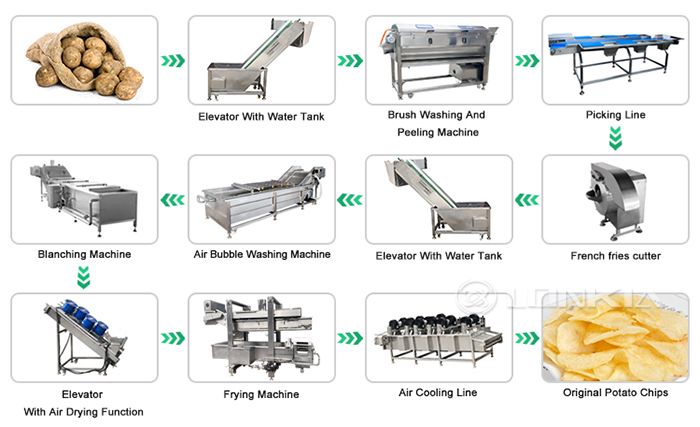
Labor Requirements and Cost
Automatic Processing Line: Automatic production lines require less labor, as most of the process is automated. This results in significant savings in labor costs, and reduces human error, leading to less waste and higher consistency in production. However, the initial investment for automatic lines is usually higher, and the maintenance cost is more significant due to the complexity of the equipment.
Semi-Automatic Processing Line: Semi-automatic lines involve more manual labor, as certain stages of the production process still require human involvement. While this increases labor costs compared to an automatic system, the initial investment for semi-automatic lines is lower, making them a more affordable option for small businesses or startups.
Which One to Choose? If reducing labor costs is a priority and you’re willing to invest in the higher initial cost for long-term savings, an automatic processing line is ideal. If you’re working with a smaller budget and need flexibility, a semi-automatic line is a more cost-effective choice.
Consistency and Quality Control
Automatic Processing Line: Automatic lines excel in maintaining product consistency. Due to the precise control over each production step, such as slicing thickness, frying temperature, and even seasoning application, the quality and consistency of the product are maintained throughout the process. Automatic systems also offer real-time monitoring and self-adjusting capabilities, reducing the potential for human error and ensuring uniform quality across all batches.
Semi-Automatic Processing Line: Although semi-automatic lines still rely on machines for key tasks, human intervention in some stages can lead to variations in product quality. For example, slight inconsistencies in slicing or seasoning may occur. However, semi-automatic lines can still maintain relatively high quality, especially in smaller production runs.
Which One to Choose? For businesses that require high consistency and quality across large batches of product, an automatic line is the better choice. If your production needs allow for slight variations in quality and you have the ability to manually correct them, a semi-automatic line may be sufficient.
Flexibility and Maintenance
Automatic Processing Line: While automatic lines are efficient, they tend to be less flexible. Adjusting production parameters or switching between different types of potato chips may require technical expertise or machine reprogramming. Maintenance can also be more complicated and often requires specialized technicians due to the advanced technology involved.
Semi-Automatic Processing Line: Semi-automatic lines are more flexible and can be easily adjusted for different production needs, such as batch size, product variations, or speed changes. Maintenance and repairs are typically simpler and more cost-effective since the machines are less complex than fully automated systems.
Which One to Choose? If flexibility is important and you need to quickly adapt to different product demands or production variations, a semi-automatic line would be more suitable. If you need large-scale, highly standardized production with less need for adjustments, an automatic line is the better option despite its lower flexibility.
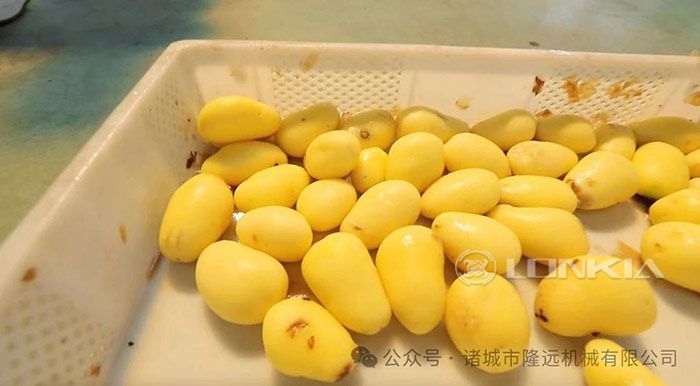
Space Requirements
Automatic Processing Line: Automatic processing lines tend to be larger and require more space due to the additional machinery and automation systems involved. If your production facility has limited space, this could be a major factor to consider. Automatic lines also require more infrastructure for energy supply, water, and waste management.
Semi-Automatic Processing Line: Semi-automatic lines are generally more compact and require less space, making them suitable for smaller or more flexible production facilities. The simpler setup means they can fit more easily into smaller spaces without compromising efficiency.
Which One to Choose? If your facility has sufficient space to accommodate larger equipment and you’re focused on high-volume production, an automatic processing line would be ideal. If space is limited or you require a flexible production layout, a semi-automatic line is more adaptable.
Conclusion
Choosing between an automatic and a semi-automatic potato chips processing line depends on factors such as production volume, budget, space, and desired level of automation. Automatic lines offer higher efficiency, consistency, and lower labor costs, making them perfect for large-scale production. On the other hand, semi-automatic lines provide flexibility, lower initial costs, and easier maintenance, making them a great choice for medium or small-scale operations.
At LONKIA Machinery, we specialize in both automatic and semi-automatic potato chips processing lines. Our solutions are customized to meet the specific needs of your business, helping you improve production efficiency while maintaining high-quality standards. Contact us today to find the best solution for your production needs.


